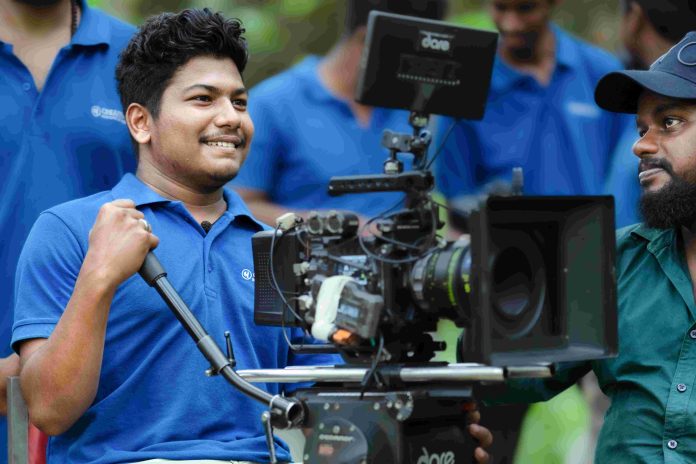In photography, light is an important element to create an image, without which photography is almost impossible. So, if a photographer learns to control the light, then it is possible to create impressive shots. It is important to take a photo in manual mode, by understanding the three elements of the ‘exposure triangle’ i.e. Aperture, Shutter speed, and ISO. Controlling these three elements by having better knowledge about each of these, leads to creating well perfectly exposed images. Furthermore, this guide will help you understand and get a clear idea regarding Aperture for better photography experience.
What is Stop in Photography?
In photography, “stops” undoubtedly refer to discrete steps in exposure control. Each “stop” represents a doubling or halving in the amount of light that reaches the camera’s sensor or film. This phrase dates back to the era of manual aperture adjustments made with physical stops or diaphragms, when photographers would change the size of the aperture opening to increase or decrease the amount of light. The change from these physical stops, which were usually made of perforated brass plates with different diameters, to using digital F-numbers to show aperture settings was a big step forward in photography technology. This change made it possible to adjust exposure and depth of field with more accuracy and flexibility, which helped hasten the development of photography techniques.
In the early days of cameras, photographers commonly used three types of aperture patterns to control the amount of light entering the camera: Rotate, Waterhouse, and Iris. The term “stops” used to refer to the different aperture settings is derived from the Waterhouse stops, which were interchangeable plates with various-sized holes that photographers could insert into the camera to change the aperture size and thus control the exposure. This term has persisted in photography to describe the standardised increments of exposure adjustment, even as camera technology has evolved over time.
John Waters created selectable apertures for the first time in 1858. In contrast to modern aperture stops, Waterhouse stops lacked an adjustable ring. Instead, to alter the aperture, photographers used metal plates with holes that had varied diameters. In order to modify the aperture, the plates were swapped between photos. It wasn’t until the 1880s that photographers started to realise that the depth of a picture is influenced by the aperture, and that the depth of field may be manipulated to achieve a variety of effects.
For instance, if a photographer learns that he will double the amount of light in his shot, it implies he will raise his exposure by one stop. An aperture is a movable opening that admits half or twice as much light as the step directly above it.

What is an aperture?
Aperture is one of the 3 pillars of photography, the other two being shutter speed and ISO. First of all, the aperture is the opening in the lens and not on the camera body. Most of us would have already heard about Aperture and even tried its settings on the cameras. For many beginner photographers, the practical setting of the aperture might cause confusion and trouble while using the manual mode. And finally, I ended up using auto mode on the DSLR camera. So that all settings, including the aperture setting, will be set automatically.
To understand “What is Aperture?”, it’s good to relate it to our eye. The human eye has a portion called the pupil, through which light passes and enters the eye. Similar to this, our camera lens consists of a circular opening. Such that, it allows the light to enter the camera and reach the sensor.
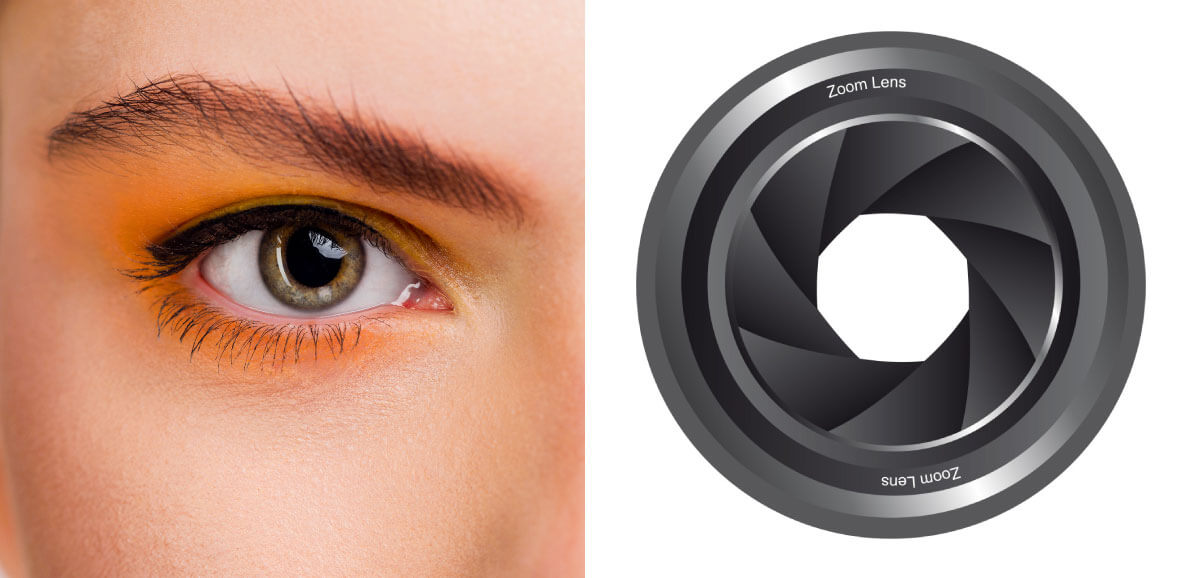
Aperture is a small circular hole, an opening in the lens that determines the amount of focused light reaching the image sensor. We can increase or decrease the size of the aperture as per the required light.
With every increase of aperture size, the amount of light increases by double. While with every decrease of aperture size, the amount of light decreases by half. As per the amount of light we want into our camera sensor, we need to set the aperture size. And this has to be repeated for every image.

Aperture is made-up of a circular iris mechanism, called Diaphragm. Further, it’s mounted in between the lens elements and are made of tissue-thin metal leaves. Such that they overlap each other like the petals of a flower to form the aperture in its center.



The Iris circular mechanism functions are similar to the iris in the human eye. While the aperture functions similar to the eye pupil. Hence, the concept behind the element Aperture is very simple. It is to allow the amount of light as much we want it to enter into the camera.

What is f-stop or f-numbers?
Aperture is an adjustable “circular hole” that lets light pass through the lens and reach the camera’s sensor. F-stops are the unit to measure the Aperture-size. The other way, it’s also known as f-numbers, f-stop numbers, focal ratio, or f-ratio. In order, to make changes in aperture size, we have to make changes in these f-numbers provided in the camera.
Changing the size of the aperture changes the amount of light entering the camera. While this aperture is present in the lens, the relative numbers that refer to the aperture size are present in the camera body.
The numbers you would have noticed in your camera and on the lens barrel, such as f/2, f/1.4, f/22, and so many such numbers. These numbers are f-stops or f-numbers.
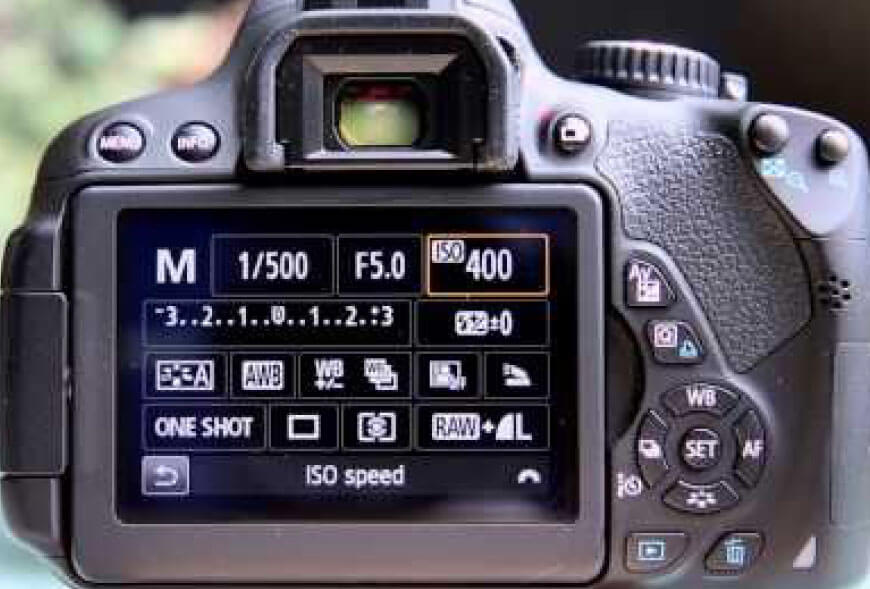
Each and every f-number is related to the aperture size. Well, it is not the actual or physical size of the aperture. Instead, it is simply the relative size of the aperture. This helps us to determine how bigger or smaller the size of the aperture is required.
The f-numbers seem like a random sequence of numbers. But indeed it is determined on the basis of a simple mathematical calculation. In the one-stop f-number series, the f-numbers increase such that every next f-number is the multiplication of the square root of 2. Starting with the number 1.
Next f-number would be 1 x square root of 2 = 1 x 1.414 or say = 1.4
And hence the next number would be 1.4 x square root of 2 = 1.4 x 1.4 = 2
Next is 2 x sq. root of 2 = 2 x 1.4 = that’s 2.8 And so on….
We would find the sequence as
f/1, f/1.4, f/2, f/2.8, f/4, f/5.6, f/8, f/11, f/16, f/22, f/32, f/44, f/64
What does F mean in Photography?
The F in F-number or F-stops in Photography stands for Focal. F-numbers are calculated by dividing the Focal length by diameter.
F-stop = Focal Length / Diameter
What is the Relation between f-numbers and Aperture?
For every beginner photographer, one of the confusing parts is the f-numbers. Well, it is not that difficult to understand. But, once we get used to these f-numbers, it becomes much easier.
But, why does it become confusing? It’s because the f-numbers & its relative aperture sizes have inverse relation, that is
- A smaller f-stop number means a larger aperture size and lots of light.
- A bigger f-number means a small aperture size and less light.
If the f-number is smaller like f/2.8, f/1.2, etc., when the number decreases the aperture size will be large. Similarly, if the f-number is large like f/16, f22, etc., the aperture size will be small. So, if the f-number is smaller, the aperture is larger and if the f-number is larger, the aperture is smaller. It is so simple until you understand the relation and the concept.
One Stop F-numbers: f/1, f/1.4, f/2, f/2.8, f/4, f/5.6, f/8, f/11, f/16, f/22, f/32, f/44, f/64
These particular f-stops are called full stops or whole stops. Very commonly, its called one-stops. Since the immediate change of these numbers, will increase the amount of light by double or decrease by half. Remember, that it’s only the amount of light that doubles and halves and not the aperture diameter.
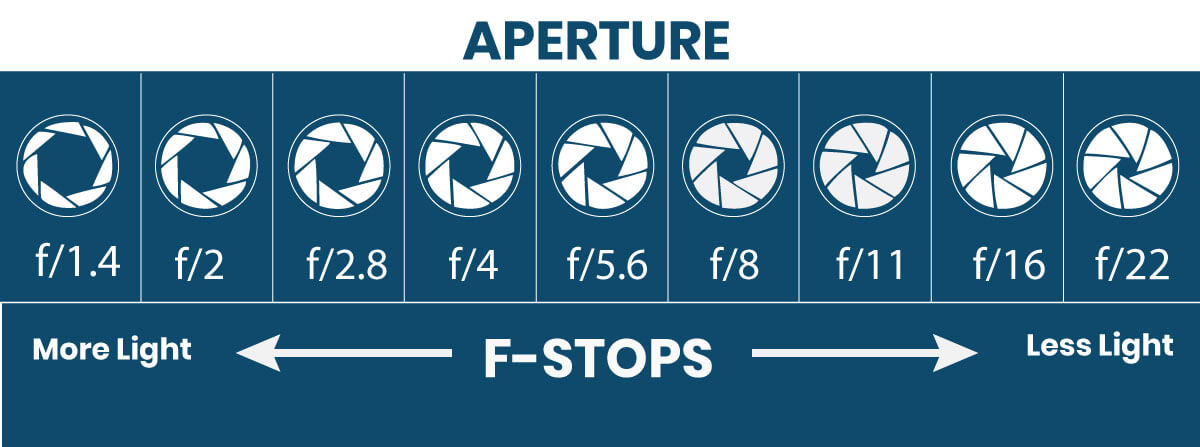
The aperture size is increased or decreased by changing the f-stops. Lower the f-number the opening of the aperture is large and it allows more light through the lens. The higher the f-number; the opening of the aperture is small and it allows a small amount of light through the lens. According to the amount of light required, we make necessary settings in f-stops.
Changing a smaller f-number to a bigger f-number refers to stopping down. While a change from a bigger f-number to a smaller number is the opening up on the lens.
F-stops are in three different forms, namely,
- One stops
- One third stops
- Half stops
The f-numbers mentioned earlier that is f/1,f/1.4, f/2 and so are the one-stop f-numbers. Whereas the f-number series for one-third like f/1.8, 2.2, and a half stops like f/1.7, 2.4 make smaller changes by only one-third and half change in the amount of light, respectively.
| One Stop | 1 | 1.4 | 2 | 2.8 | 4 | 5.6 | 8 | 11 | 16 | 22 | 32 | 44 | 64 |
| Half Stop | 1.2 | 1.7 | 2.4 | 3.3 | 4.8 | 6.7 | 9.5 | 13 | 19 | 27 | 38 | 54 | 76 |
| One-Third Stop | 1.1 | 1.2 | 1.6 | 1.8 | 2.2 | 2.5 | 3.2 | 3.5 | 4.5 | 5.0 | 6.3 | 7.1 | 9 | 10 | 13 | 14 | 18 | 20 | 25 | 29 | 36 | 40 | 51 | 57 | 72 | 80 |
The f-number is one of the most important settings on our camera to set the amount of light to the sensor. And hence, we need to keep an eye on which value we have to set for every image. Also, remember that the terms stops and f-stops are different.
How to Set Aperture in the Camera?
To adjust the aperture or say f-stops, Cameras are provided with the main dial or separate dial. And as per the camera modes, we can set the aperture. In the camera, there are two modes available to set the aperture. The first mode is ‘aperture-priority’ mode indicated as “A” or “AV”. While another one is ‘Manual mode’, indicated as “M”. These options are found mostly on the top of the camera on Mode Dial.
When the camera is set to the aperture-priority mode, we can select the desired aperture. It’s done by simply scrolling or moving the wheel provided for this on the camera. In such cases, the camera automatically controls the shutter speed. While when the camera is set to the manual mode, the aperture has to be controlled by the wheel. While in some cameras, it’s done by simultaneously pressing the Av or =/- menu and scrolling the wheel together. In such cases, you have to control both the aperture and shutter speed.

Well, to experiment that how Aperture affects the exposure of the image, you may perform the following.
- For better understanding, carry out this experiment in outdoor natural daylight.
- Keep your exposure mode (camera mode) to Manual mode or M on the Camera. It is provided on the top of the camera dial called the mode dial.
- Then either make your Aperture setting to maximum or minimum. Scroll your aperture dial, such that the f-stop is either the smallest or the highest number possible.
- Frame an image by setting the first aperture that you have set (the minimum or maximum f-stop), appropriate shutter speed, and ISO. Try with 1/100 shutter speed and 100 ISO.
- Without changing the frame, shutter speed, and ISO, capture your next image by only changing the f-stop to the next one-stop number. For example, if the earlier one was f/2, then now it would be f/2.8
- Repeat the same, by simply changing the f-stop to the next one-stop number. In our case, set it to f/4, and then capture the same frame.
- Continue this for the next-next one-stop f-numbers to the extreme possible.
Now, just check out the resulting images from starting till the end. You would find the images going brighter to darker or vice-versa in reverse order. The amount of light halved every time when we changed the f-stop from a smaller number to the next. Making the images darker than the previous one.
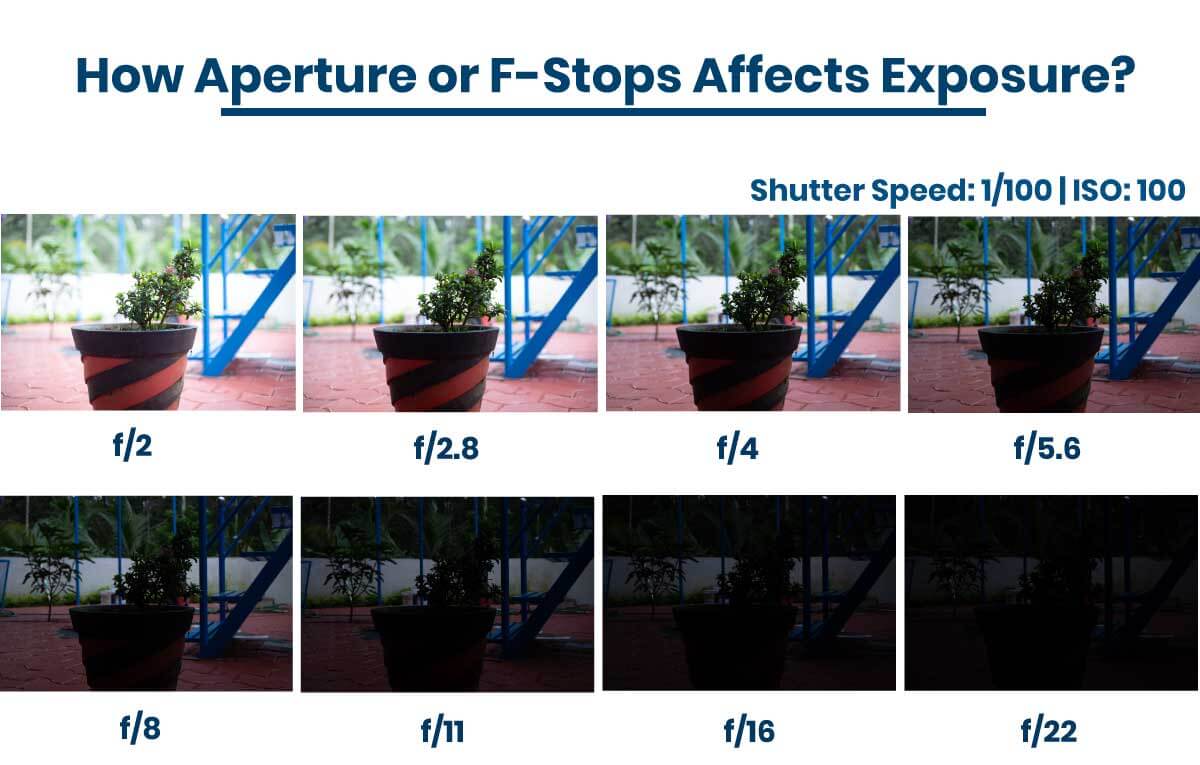
How Aperture Affects the Exposure?
While taking pictures, the aperture plays a vital role. Because it is the component that determines the amount of light. So, if the aperture size is large, more light can be obtained. It indeed makes the image brighter. On the other hand, if the aperture size is smaller, it reduces the amount of light entering the lens. And thus the image will be darker. Thus, when shooting in daylight or in more light conditions the aperture size should be small. Since more light is already available. In the case of low-light conditions, the aperture size should be large. Since in such cases, to acquire good exposure, more light is required.
How Aperture Affects the Image?
As mentioned earlier, the aperture in photography is the main factor that makes a huge impact on the image. Few such effects on the images that are caused by the aperture are as follows.
- Larger aperture size indicates more brightness or overexposed photos
- Smaller aperture size indicates less light or underexposed photos
- Larger aperture size brings in Shallow Depth of field
- Smaller aperture size brings in Large Depth of field
- In low light situations, a larger aperture size helps in exposure
- Control the amount of light from the flash
- Aperture is the major element to apply the bokeh effect in the images
- The focus shift on some lenses may occur due to change in aperture
Which Aperture is Best?
How to Choose the Right Aperture in Photography?
Now for taking photographs, you may have the idea about how the aperture works. Now for taking photograph you may have the idea about how the aperture works so the aperture is related to the exposure and the depth of field. We use focus and depth of field to create attention to what is important in the frame. So, to pick a correct aperture we need to consider both the exposure and the depth of field.

When it comes to exposure, at first, one should be clear about which subject you are going to photograph. According to that,
- If you are shooting at the daytime mostly you will require a smaller aperture or large f-number like f/8 f/11,f/16,f/22 to reduce light since the amount of light will be more in the daytime.
- If you’re in a darker location, you may want to use large apertures or say smaller f-numbers like f/2.8, f/1.4/, f1.2 to capture a photo of the proper brightness
Whereas, in practice, to balance this, we make changes in shutter speed too. Remember that, if the one-stop change in f-number makes the image darker or brighter. Then the change in shutter speed to the same number of one-stop will provide the perfectly exposed image.
Best f-stop for Portraits
The main element in Portrait Photography is the expression on the face and in the eyes. The eyes and face in to be in good focus to catch the viewer’s attention. Hence, to bring in-depth in the image, the aperture plays a vital role.
Which aperture is best for Portraits?
In Portrait photography our main focus is to be on the subject, by keeping the background less focused or out of focus. To do so, the aperture needs to be wide open. Hence, the f-number needs to be a smaller number. Such as f/1.4, f/2, f/2.8
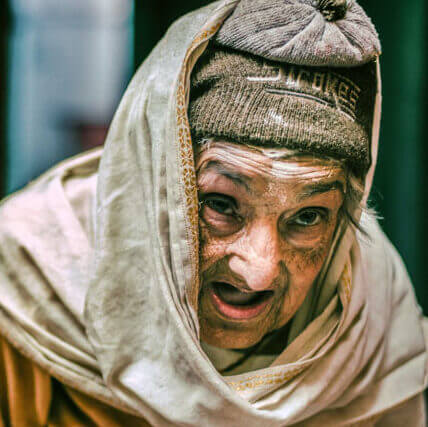
Best f-stop for Landscape
There are various ways to capture landscape photography. As per the time, season, weather conditions, and the light available, the application of f-stop will differ. On the other hand, the main purpose of landscape photography is to portray the best beauty of the scene. Hence, the f-stop is thus used in such a way that the image is the maximum area in focus.
What aperture is best for Landscape?
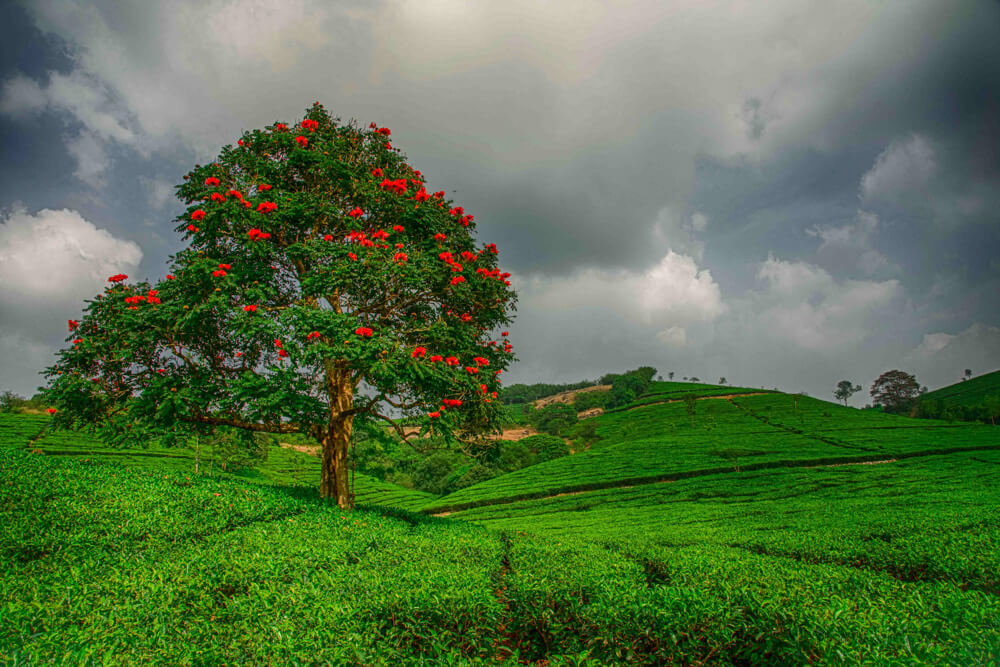
Usually, in landscape photography, the subjects in the entire frame are considered to be in focus. To achieve this, our aperture needs to be narrow or say less open. Thus the ideal f-stop numbers will be f/8 and above. Such as f/8, f/11, f/16, and so on.
Best f-stop for Night Photography
Most people, find it very difficult to capture during low light situations. The difficulty to focus is observed due to the lack of light. While once understanding how to manage such low light situations, the work becomes easy. Adjusting proper f-stop would be the first and initial step to do so.
What is the best aperture for Night Photography?
It makes a clear sense that the aperture needs to be open wide in low light situations. Such as f/2.8 and below that is f/2, f/1.4 as per the focal length or lens being used. Remember that a high ISO between ISO 800 to 3200 and slower shutter speed will help in such low light photography.
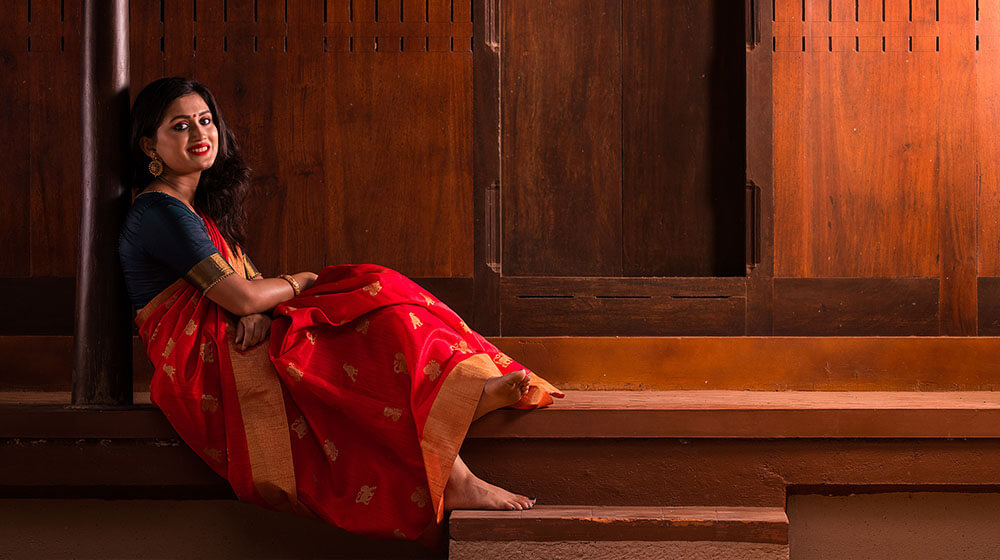
Best f-stop for Wildlife Photography
In wildlife photography, the subjects that are animals, birds, and insects are captured in their varied actions and expressions.
What is the best aperture for Wild Photography?

The use of tele lens and a smaller f-stop like f/2 or f/2.8 is considered ideal. It’s usually when the intention is to capture the wild animals or birds in sharp focus and separate the background with out of focus.
Whereas when the intention is to capture the wildlife in their habitat and want to give its wider scene, the aperture needs to be narrower. The f-stop like f/8 and above are considered for this in such conditions.
Understanding Aperture in Photography
Make changes in f-stops of only one-stops from smaller f-numbers to larger f-numbers or vice-versa, for better understanding of aperture. Try this first, in Aperture priority mode. This will help you in understanding the one that stops f-numbers thoroughly. Practicing the aperture in photography will help you learn photography from the basics. In fact, it is an important element for any genre of photography.
Practice: Keep your exposure mode (camera mode) to Aperture priority mode. Usually, it’s mentioned as A or Av in camera. And present on the top of the camera mode dial. Change the f-stops one after the other and capture the images. You will notice that in each image the exposure is the same, although there was a change in f-stops. Every time the exposure gets balanced. By making changes in shutter speed by the camera automatically.
The aperture plays a vital role in photography, in early-stage it will be a little difficult to understand how to use the aperture and its functionality. Since the aperture is related to many factors but once you understand the working of the aperture, your photography skills will be increased and you can create wonderful images. This Guide for Understanding Aperture intends to provide Knowledge and Educate about how the aperture works and its various functionalities.
FAQ
Let’s have a quick summary on Aperture in Photography, with the answers to the most frequently asked questions.
Aperture in Photography is the opening in the lens that allows the light to enter into the camera. It is measured in f-stops or f-numbers. The size of the aperture is determined by the diaphragm in the lens. The change in its size changes the amount of light passing into the camera. The aperture size is measured in f-stops or f-numbers. The larger the f-number, the smaller the aperture size and less light pass through it. While smaller f-number gives a larger aperture size and more light to enter the camera. 
In low light situations, our requirement is to allow the maximum amount of light to enter into the camera. For which the maximum wider aperture size is recommendable. That is, the smaller f-numbers, such as f/1.4, f/2, f/2.8 etc… will be good for low light situations. Lenses that allow using smaller f-numbers are worth in such low light scenarios.
To get everything in focus in an image, the aperture size needs to be smaller. Larger f-number like f/22 will make the aperture size smaller and hence increase the sharpness or focus on the image. The subjects from nearer to the furthest in the image gets in focus with the larger f-number like f/16 or f/22 and balancing the shutter speed and ISO accordingly for perfect exposure.
The maximum aperture or the largest aperture means the maximum opening of the aperture hole in a lens. It is the widest possible opening of the lens. Every lens has its maximum aperture being mentioned on the lens barrel. For example, if it’s mentioned 24-105mm 1:3.5-5.6, then the maximum aperture of this lens is f/3.5 at a focal length of 24mm.
The minimum aperture or the smallest aperture refers to the minimum opening of the aperture hole in the lens. It is all about the smallest possible circular hole or aperture that will be formed in the lens diaphragm. These are the largest f-number of the lens. For example, some lenses have f/22, or f/32, etc… as the minimum aperture in the lens.
Aperture refers to the size of the circular hole formed by the blades of the lens diaphragm. A Larger circular hole so formed produces a large aperture size and allows more light to pass into the camera. While the reverse, allows less light to enter inside the camera.
On the other hand, the f-stop is the number relative to the aperture size. F-numbers or f-stops are the scales of numbers that represent various apertures. The calculation of f-numbers indicates that the f-stop and aperture size has a reverse relation. A smaller aperture size means a larger f-stop number, while a larger aperture size means a smaller f-stop number.



